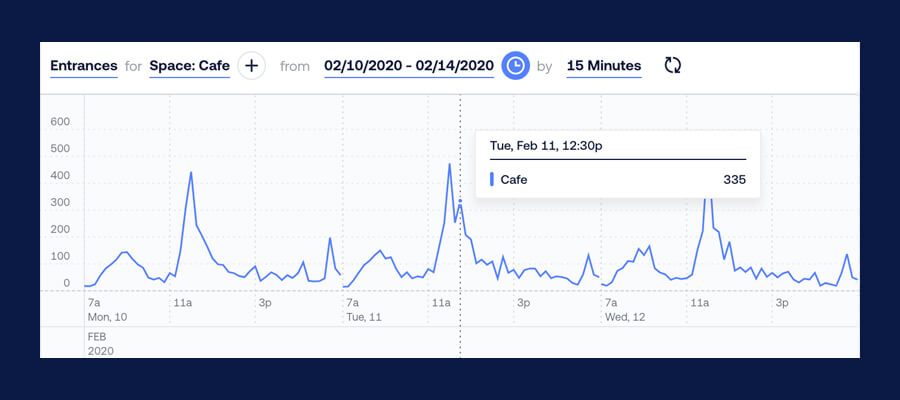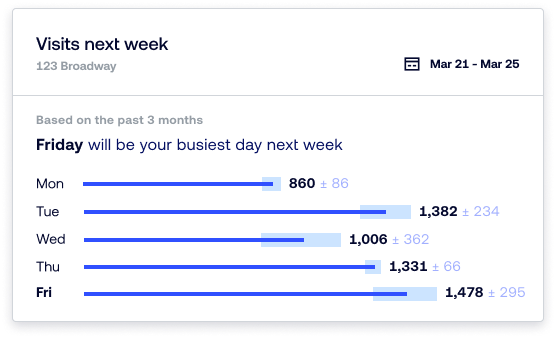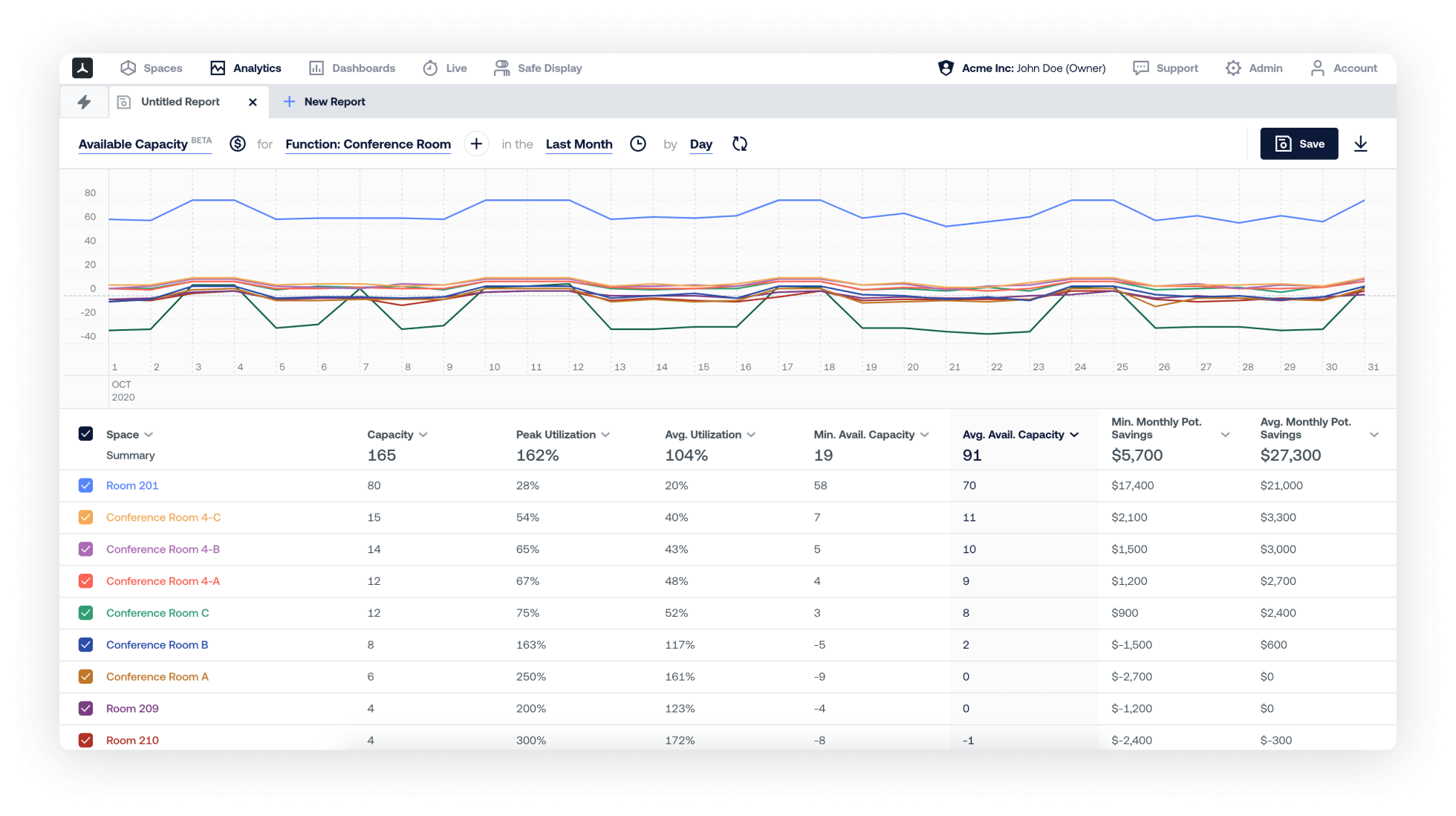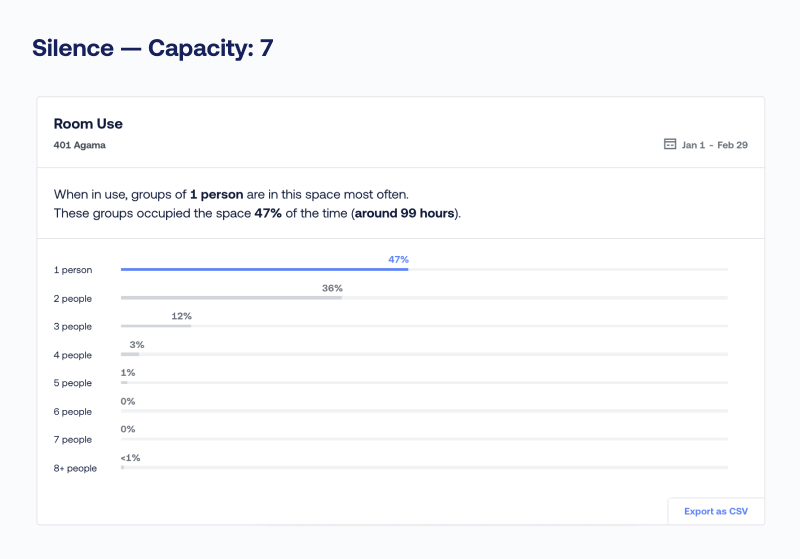Many companies already have a badge system set up to restrict access to spaces. So, they choose to use it to count people as well.
But badge data doesn’t count people the way you need. The data it provides is incomplete (not everyone badges in; badge data doesn’t show you how people interact with your space). Relying on this incomplete data can lead to costly and politicized decisions rooted in assumption rather than reality.
Badge data doesn’t really tell you how many people are in your space
Not everyone badges in — even when they’re supposed to.
One of our Fortune 500 customers knew this. Not all of their warehouse workers badged in when they came to work — tailgating is a common cause:
Our customer dug into their data to see how widespread the behavior was. On any given day, 20% of their workers don’t badge in. That’s more than 10,000 employees across their entire portfolio — every day.
If they relied on badge data alone, it’d be nearly impossible for our customer to optimize current space needs and forecast future needs.
But let’s say you don’t experience tailgating issues. You have a workplace policy that somehow enjoys 100% compliance. Badge data doesn’t tell you how people use your space while inside your building — which is what you really need to know.
Someone badges in. So what?
It doesn’t matter that 50 people badged in at 8:30 a.m. What matters is how these people used your space. Did they go to the cafeteria, a conference room, or a phone booth? Did they use an interior staircase to travel to a different floor for a meeting?
And when did they leave your office?
Knowing this helps you identify current and future space needs.
If most employees gravitate to one or two conference rooms, you may need to assign teams to other areas to balance your population density. If most rooms are empty after noon, it might be time to rethink your lease options.
Badge data doesn’t give you this granularity — unless employees are forced to badge in everywhere.
One of our clients installed a Density sensor at their cafeteria’s entryway to better understand their foodservice needs. Over the course of one week, it was clear that 11 a.m was peak volume. This client adjusted both staffing scheduling and food orders accordingly:

And while historical behavior is useful, knowing how employees will use your space in the future is even more valuable. This same customer used Density to forecast its foodservice needs for the following month:

The way people interact with your space is changing, particularly post-COVID. Badge data does not show you how or why.
Knowing the how and why will help you make smarter space decisions. Do you need more or fewer phone booths? Should offices be converted into small meeting rooms? How can you validate the need for an additional satellite office?
Badge data can’t give you the answers. The data it does provide is typically hard to decipher without a serious time investment. Even if you can afford that investment, you shouldn’t have to.
Below is a Density report that shows the peak and average utilization of an entire portfolio in a single dashboard:

This report shows that while Rooms 209 and 210 are way over capacity, Room 201 is not. Neither are most conference rooms. Our customer pulled this data within seconds of needing it.
Badge data forces you to make assumptions
Badge data doesn’t differentiate between that salesperson who comes in for a 30-minute meeting and the engineer stationed at her desk for 8 straight hours.
But these differentiations are critical to space management. Teams are always asking for more space. You don’t want to be the person to say no, but it’s nice to have clear data to back you up when no is the only answer.
Take, for example, this room-use report (below) showing how meeting space 401 is grossly underused:

Nearly half of the time, one person uses it (although the room is designed for more than 8 people). The team that uses this floor doesn’t need more space — they need to make better use of their existing space
Data proves it.
Most folks know there’s wasted space in their offices. Relying on badge data forces you to assume where. Occupancy and utilization data can pinpoint where that waste actually is. Only occupancy and utilization data can tell you how to load balance people and assets without leasing more space.
And Density does it without invading employee privacy.
If you only need to know how many people enter your building every day, badge swipes may be sufficient (though not foolproof).
But you don’t make space decisions based on incoming traffic. You make decisions based on occupancy and utilization over time.
Badge data can’t provide that.